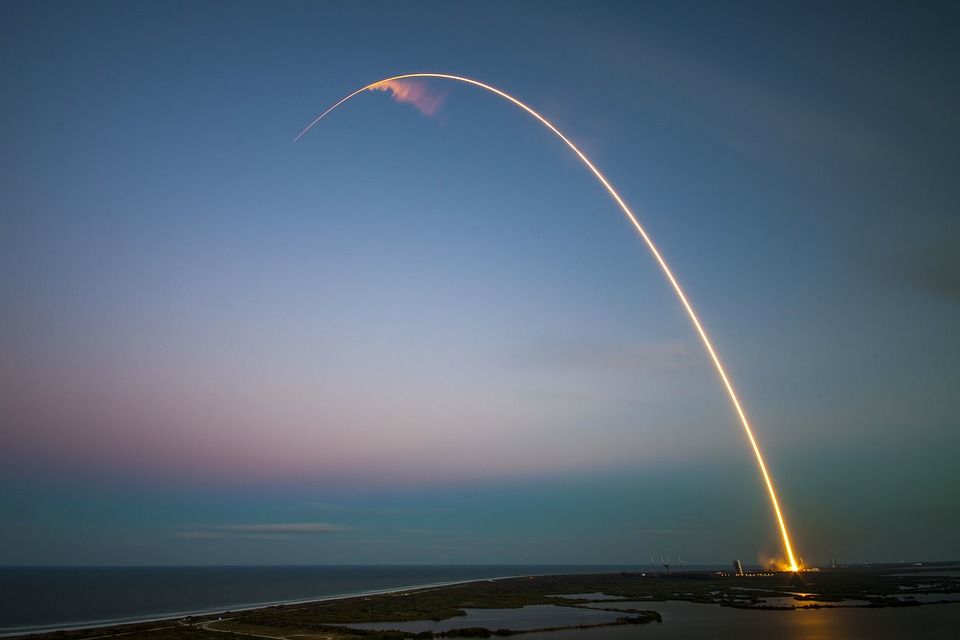
Japan successfully launched its “new flagship H3 rocket” on Monday, The Japan Times reported on July 1.
The H3 No. 3 rocket was launched from the Tanegashima Satellite Launch Center in Kagoshima Prefecture and successfully put an advanced Earth observation satellite into orbit. The operation comes after a failed rocket launch attempt last year.
The Daichi-4 satellite, also known as Advanced Earth Observation Satellite-4, was jointly developed by the Japan Aerospace Exploration Agency (JAXA) and Mitsubishi Electric following the loss of Daichi-3 in the H3 launch failure in March last year.
“It was really a perfect launch, 100 out of 100 perfect,” said Makoto Arita, JAXA H3 project team leader.
The H3 rocket followed a predetermined trajectory, split into two stages and put the satellite into orbit, with the remains of the rocket falling into the Indian Ocean.
“Today, the Daichi-4 payload was injected into the operating environment (space) and began its mission,” JAXA chief Hiroshi Yamakawa said at a news conference Monday hours after the launch.
Yamakawa said the successful launch of the H3 rocket demonstrated progress in preserving Japan’s autonomy in terms of access to space while ensuring international competitiveness.
“I think today was an important step towards achieving these goals,” he said.
Prime Minister Fumio Kishida hailed the successful launch, writing on social media his “respect for the efforts of all parties involved and his hopes for progress” in Japan’s space program.
JAXA plans to launch six H3 rockets annually, phasing out the older H-IIA rocket that is currently its flagship after its 50th launch at the end of this fiscal year, which runs through March 2025.
All eyes were on the third launch and whether it could demonstrate the rocket’s continued reliability amid plans for a full transition to the H3 in the next fiscal year.
Yamakawa said he hopes the successful launch of the H3 rocket for a second consecutive time will boost its profile both domestically and abroad, but added that JAXA will continue to carefully review the results of the latest launch.
“Personally, I am very relieved by this launch,” he said, noting that to ensure sustainable progress we cannot rest on our laurels.
Japan has experienced several failed missile launch attempts in recent years.
Last February, the first attempt to launch the H3 was aborted at the last minute. A second attempt the following month failed shortly after liftoff when the rocket’s second-stage engine failed to ignite and the agency was forced to order the rocket to self-destruct. JAXA conducted its first successful launch of the H3 rocket in February of this year.
Meanwhile, in March, Tokyo-based startup Space One failed to become Japan’s first private company to put a satellite into orbit when its solid-fueled Kairos rocket caught fire just minutes after liftoff.
Japan considers stable and commercially competitive space transportation capabilities essential not only to its space program but also to national security needs.
JAXA had originally planned to launch the H3 rocket from Daichi-4 on Sunday, but poor weather conditions delayed that attempt.
The development of the Daichi-4, designed for high-resolution Earth observation, cost approximately 32 billion yen (17.5 billion rubles). It has an observation range of 200 km, four times longer than the Daichi-2. This long range allows it to conduct effective surveillance even at night and in bad weather.
The satellite is capable of detecting ground deformations, landslides and the effects of natural disasters such as heavy rains, earthquakes and volcanic eruptions. After a catastrophe, it can also quickly assess the extent of the damage.
In addition, Daichi-4 can track the movement of ships using an Automatic Identification System (AIS) receiver. AIS automatically sends and receives important vessel information, including call signs, names, positions, headings, speeds and destinations. This system improves communication and information sharing between ships and between ships and land stations.
Source: Rossa Primavera
I am Michael Melvin, an experienced news writer with a passion for uncovering stories and bringing them to the public. I have been working in the news industry for over five years now, and my work has been published on multiple websites. As an author at 24 News Reporters, I cover world section of current events stories that are both informative and captivating to read.
